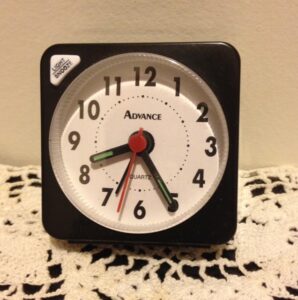 Shopping cart 0
Shopping cart 0
Free shipping
No products in shopping cart
Continue shopping
Today, electrosmog is on everyone’s mind because of its harmful side effects. It’s no wonder that this is the case since its intensity increases on a near-daily basis. The current implementation of new LTE/4G data transfer frequencies marks one more step in a direction that makes more and more people sick. This illness is often referred to as Electromagnetic Hypersensitivity Syndrome (EHS).
We are constantly exposed to electromagnetic influences because each molecule, each atomic particle, has an electromagnetic field. The Sun and the Earth also produce electromagnetic fields. Four generations ago these electromagnetic fields were harmless to us: either they were too weak to influence us or they were life-supporting, like sunlight.
However, with the development of electric power and all of its modern manifestations, our natural environment has evolved into a tightly woven network of multiple radiating sources. We refer to this excessive density of radiation as “electrosmog.” Invisible, inaudible and noticeable only to very few people, electrosmog has become a constant threat to our health.
Electrosmog results from the accumulation of different electromagnetic influences in one area. A single source of radiation, such as a bedside lamp, generates an electromagnetic field that may be potentially harmful, but alone is not electrosmog. However, stronger sources of radiation, such as Wi-Fi routers and Smartphones, do create electrosmog even by themselves.
A combination of sources could also be problematic: a clock radio, TV, and a cordless phone in one room at the same time would generate electrosmog. High intensity radiation coming from cell towers, mobile phones, cordless phones (DECT radiation), utility meters, power lines, and even the wireless technology of a neighbor’s apartment or house exponentially increases the amount of electrosmog in your home.

All battery-operated appliances are DC devices. This includes Cell phones (when in airplane mode). In contrast, alternating fields change their orientation. The current in our homes forms an alternating field with a frequency of 60Hz.
This means that the effective direction of the field changes sixty times per second.
Alternating electromagnetic fields are distinguished by high and low frequency.
All cable bound fields are of a low frequency with a typically range from 1Hz to 30,000Hz. High-voltage lines also carry low frequency, alternating current, which ends up as the 50/60Hz that are needed in every household. The voltage on the other hand can be between 10,000 and one million volts.

A house, with all its concealed and exposed wires and cords as well as its appliances, devices, and lamps, creates a large, low-frequency alternating field. This field can extend to metals and wet building materials in the field’s immediate vicinity. As a result, in most cases the walls and floors emit a correspondingly large electromagnetic field.
In the low-frequency fields, we still distinguish between the magnetic and the electric field.
A flowing current generates magnetic fields, so wherever appliances or lights are turned on a magnetic field is produced. It can be measured either in nano Tesla (nT) or in milli Gauss (mG). We will refer to it in nT.
Electrical fields are present everywhere where cords and wires carry electricity even when no appliances or lamps are turned on. For example, extension cords under your bed emit an electrical field while you sleep. This field is measured in volts per meter (V/m).

High-frequency alternating fields penetrate walls and cannot be switched off. They always have a transmitter that generates them. However, they do not need a receiver to have an effect on you.
Examples of these fields include:
Share
[addtoany buttons="copy_link,linkedin,x,facebook"]